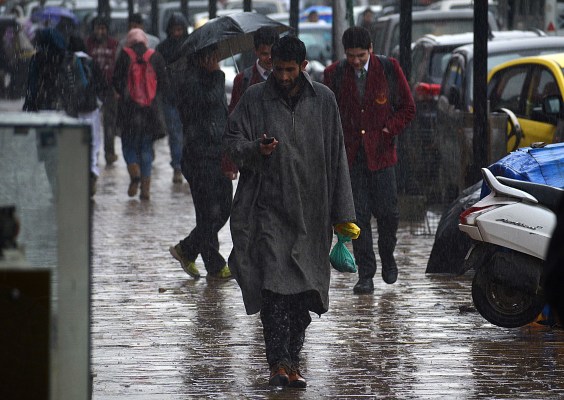Hello and welcome back to our regular morning look at private companies, public markets and the gray space in between.
This morning we’re talking about churn — the bane of software-as-a-service (SaaS) companies big and small — in the new world we find ourselves in. SaaS companies, from startups to huge public firms, have built their businesses under strong economic conditions. So what happens to the industry now that the global economy has hit pause, layoffs are piling up across national economies and venture capital is slowing?
It’s easy to say that churn will go up; some customers will close, cancelling contracts (boosting gross churn) while other customers will slow software budget growth (limiting net retention). But how bad will things really get? To get a handle on what’s next for churn, I spoke to the CEO of CrowdStrike, a public SaaS company; the CEO Gainsight, a quickly-growing private SaaS company who recently ran a survey on the topic; and Denis Barrier, a partner at venture capital firm Cathay Innovation. We also have fresh data to explore from Cledara, a startup that helps other companies control their software spend.
Let’s go!
Churn
I caught up with Gainsight’s Nick Mehta Monday. Gainsight is a SaaS company focused on customer success, though its product line has expanded in recent years. According to its CEO, Gainsight could reach $100 million ARR in its current fiscal year, which began on January 31.
What we care about today, however, is that Mehta asked a few dozen executives at quickly growing private and public SaaS companies about their churn expectations. Gainsight compiled the survey data and gave TechCrunch access to the information. Here are the three findings that stood out the most:
- Net retention will fall as churn rises: Just under 78% of SaaS executives who answered the survey said that they expect their net retention rate to “decrease by at least 3% and up to 20+%,” according to Gainsight. Digging in a bit more on the topic, 40% of the companies surveyed saw a net retention reduction of at least 11%.
- SaaS churn won’t land equally: Companies with higher gross churn expect worse COVID-19 driven churn impacts; companies with better pre-COVID-19 churn anticipate less new churn. (This can be stated another way: SaaS companies selling to smaller companies anticipate higher COVID-19-driven churn; companies selling to enterprise customers expect to see less new churn.)
- Vertical SaaS could get beat up: If a SaaS company sells to a particular vertical that is heavily impacted by COVID-19, it could see high churn. Gainsight noted in a blog post that TechCrunch reviewed before publication that “a minority of firms (12.2%) project a 20+ percentage point increase in churn.” Some companies are expecting an explosion of customer losses.
None of that is good news, but it’s also not the worst news. Flipping one of the numbers around, 60% of surveyed SaaS companies expect net retention reduction of less than 11%.
I wonder how many SaaS startups that do die will fall prey to the first-order effects of churn instead of the second-order effect of becoming less enticing to venture investors. SaaS startups with high churn raise less and earn lower valuations than companies with better churn figures, and too much churn makes a startup unfundable in the eyes of the venture class.
However, not everyone is alarmed.
Crowdstrike
I spoke with George Kurtz, the CEO of CrowdStrike yesterday, discussing his company’s latest earnings report. Normally calls of this nature are sedate, short, and a bit light on details as executives are well-trained to avoid saying anything too interesting in case they accidentally disclose something material or private. This time, however, with the world on fire, it was an interesting chat.
Kurtz told TechCrunch that he sees a few areas of opportunity for his company that the new world has opened up, including the current explosion in the size of the global remote workforce (which needs securing, something CrowdStrike is happy to help with) and a resulting cloud boom. “There’s going to be an acceleration and digital transformation once people stabilize, because they want to move their applications to the cloud to get all this traffic off their existing network,” Kurtz said. For CrowdStrike, the new world we find ourselves in could, in fact, bolster its growth. So for some SaaS companies at least — and not merely productivity services — churn might even decline.
Cathay Innovation
I also spoke with Denis Barrier, the co-founder at Cathay Innovation, a venture capital fund that invests globally. Asked about churn that he expects in the new world, Barrier told TechCrunch that he expects different impacts by geographic region. This makes sense, given that the severity of economic impact of COVID-19 varies greatly from country to country. Past mere geographic distinctions, however, Barrier noted that some companies are going to find themselves with far more parsimonious customers counting every penny. But, he added, some firms will find themselves “in the sweet spot,” which should wind up helping them. So a mixed bag, then, regarding expected churn.
Finally, adding to the positive news, Brad van Leeuwen from Cledara shared some data on Twitter this morning that paints a positive picture regarding churn. His firm helps other companies manage their subscriptions, giving it insight into the SaaS world. Here’s what van Leeuwen wrote this morning:
It is still early. Churn expectations from the Gainsight survey are likely not yet realities, but at least there are green shoots to find in the form of partially optimistic prognostications from industry players. And, if Cledara’s data holds up, maybe more SaaS companies will remain attractive to VCs than we might have otherwise thought. But it’s not going to be an easy market, and most SaaS firms should see churn rise at least some.
